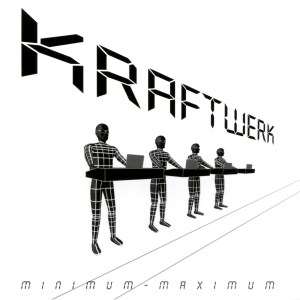I need some help finding a distro for a very old machine.
It’s my family’s old desktop with 2001 components (bought in 2004) and a Pentium CPU that is NOT i686. I checked the exact model and architecture once but I don’t remember it now. The only thing I remember is that it’s not i686 so 99% of modern 32 bit distros don’t work on it (stuck right after grub).
The machine has 1 Gb of DDR1 RAM though so I think it may be useful or at least fun to play around with.
Now it’s on Windows XP that runs quite well but doesn’t support modern SSL certificates so it can’t browse the internet (idk how to fix it ok?).
A long time ago I tried to run multiple distros in live mode on it and got only one (Puppy) to work. Display, sound, ethernet and pretty much everything worked fine. GPU seemed to be an issue though because NVidia and I couldn’t install the driver (it was skill issue and I think it’s possible to do). But now it doesn’t work for some reason.
Are there any Linux distros or other operating systems (preferably not deprecated) that I can install on it? And btw it does have bootable USB support.
EDIT: There are way too many answers and a lot of ones that don’t mind the architecture limitations. I’m grateful to everyone who replied but I have to close this discussion now and I will not reply to further answers. I have received enough information and I cannot physically read so many replies.
Tiny Core would probably run on it.
I have it on a PII 333MHz with 192MB of RAM from 1999. It grinds to a halt if I try to open pretty much any modern website though.
I just checked it and it seems to be an independent distro. Does it have a repo or do I have to compile everything I want to install?
It has a repo with programs you can install. The selection is fairly limited though.
http://wiki.tinycorelinux.net/doku.php?id=wiki:install_apps
That computer is in the basement and I’m not having any luck finding a list of what’s available.
Hmm I can’t find a browseable repo so idk if there’s anything useful for it but I might check it out. Thanks
the repos are browsable inside the package manager - I would imagine they are browsable outside as well, but I have never had cause to do so.
honestly, give tinycore a shot. fire it up in a VM and take a look around - it really is an amazingly useful distro.
My main Linux machine is too slow to run a VM of any kind
understood. tinycore is a live installable distro, so you can still test it on bare metal.
pick the GUI flavor and kick the tires for a while.
If you do compile something, it is very easy to make it an installable package you could share. I’m not sure how the repos are managed
Just reading through the comments, and your post. You’d honestly have a much better time getting a Pi of some sort and just running that. This is antiquated hardware that is going to have all sorts of headaches even if you do get it running.
Retro computing is a fun hobby though. I enjoy keeping the PC I built in 2006 running and out of the landfill
Have an upvote from me
There’s gentoo options for a lot of older architectures. I even got it running on a 32bit power machine.
Back in the day gentoo meant compiling everything from source, but nowadays there’s precompiled binaries.
If you’re doing the evanescence routine on older hardware, check to see if there’s cheap ram and ssds available that work with its interfaces. Usually the trick with pata is to use old cf to sata adapters because cf is pin compatible with the little pata interfaces they’d put on laptops.
Consider cleaning and reapplying thermal paste to the cpu. You won’t even need to take it out of the socket, just don’t dump isopropyl all over the board while cleaning.
If your old computer has a cool old sound card there’s never been a better time to use a tracker that takes advantage of its built in synthesizer!
I agree that Gentoo will probably work, as it still has functional i486 support. Be aware that you may be spending a lot of time compiling if you go that route and don’t have a second, faster machine to use for distcc or the like.
As for the nvidia card, the proprietary driver won’t work for something of that age. Check the supported cards in Nouveau (and maybe even the really old drivers for prehistoric cards). In a pinch, the vesa driver should work. Good luck.
doing the evanescence routine on older hardware
That was one of the best deep-cut comments I have read in a while! The helpful advise to OP was also nice. lol
antix never let me down…
looks like they have an i386 iso.
http://ftp.halifax.rwth-aachen.de/mxlinux/isos/ANTIX/Final/antiX-23.1/Antix 23.1 is based on Debian bookworm, so I think it requires i686 now. Older Antix releases ( based on Bullseye or earlier ) should work.
haven’t testet, but looks like there are bookworm i386 isos.
https://cdimage.debian.org/debian-cd/current/i386/iso-cd/On Debian, i386 is now i686.
https://www.debian.org/releases/stable/i386/release-notes/ch-information.en.html#i386-is-i686
They are really i686 though ( from Bookworm on ).
Perhaps openbsd or netbsd? They’re probably less likely to drop hardware support for your device in the near future than any linux distribution
Freebsd is also an option but you would have to compile it yourself as the prebuilt binaries are currently 686 despite it having support back to 486
BSD is an option but I heard it’s slower and idk anything about how it works and how to install it
I’ve never noticed BSDs being much slower, and if you’re already used to minimal linux distros like arch it’s not that hard to set them up unless you like need linux-only software.
I meant slower in terms of any rendering (web, 3D or anything else). And I’m only used to graphical DEs. I installed Arch via archinstall a few times and had a minimal Debian server with nothing except ssh working but that’s about it
You definitely can install a graphical desktop on whichever BSD, you’ll just have to follow instructions online somewhere instead of running a premade script.
If you want something really easy to use graphically right out of the box there’s also Haiku, it’s a completely independent OS that’s sort of an open source clone of BeOS but a lot more unixy than BeOS was. It’s really lightweight and has maybe my favorite desktop GUI out of every operating system I’ve used. The only real downside to it is that there isn’t an amazing web browser for it yet, the built in WebPositive is a little lacking in support for modern sites and GNOME Web, which you can install from HaikuDepot was a little unstable last time I tried it. If you don’t need to use the web a ton though (which is probably the more pleasant option on your particular system regardless of browser), it’s really nice.
Your mileage may vary for performance. It really depends what OS and what hardware. In my experience saying all BSDs are slower at rendering would be too broad a statement.
If you’ve done Arch and Debian server installs, you’ll be fine installing a major BSD. Just answer prompts and you are done, particularly if you are using the default disk partitioning scheme. Consider NetBSD. It’s known for its wide hardware compatibility. X is pre-installed, just “startx”.
Not sure where you have heard they are slower. Most of my experience has they are faster but I will say BSD kind of sucks on a laptop.
I would see what’s supported and then run something like Fluxbox as your WM
Are you sure it’s not a 686? Because apparently the Pentium Pro from 1995 is already a 686, by 2001 the Pentium 4 was already out.
Ya, that’s exactly my thought. I had Penitum 1 and Pentium 3/4 during those years. Pretty sure they are 686 and beyond.
Yes I am sure it’s not 686. 686 distros don’t boot anyways
I’m still skeptical. At the time of the original Pentium (the last 586 from Intel, the fastest of which was 300 MHz), the usual amount of RAM was something like 16 or 32 MB. A 586 with 1 GB of RAM is extremely weird and probably impossible unless it’s some sort of high-end server. This does not check out.
Oh and DDR is also from around the time of the Pentium 4. I don’t think there exists a machine that has both DDR and an original Pentium (aka 586). Again, this does not check out and is probably impossible.
There could be another reason it won’t boot.
Yeah, I’m with you. 2001 and DDR… there’s something else going on with the failure to boot. I don’t think the Pentium 3 ever supported DDR, so this is probably a Pentium 4. If truly a model released in 2001, it would be Willamette, but that required RDRAM. DDR support was introduced with Northwood in 2002. On the other hand, it could be the P4 that was new in 2004, Prescott, and the 2001 statement comes from the first year the P4 was released.
We really need to see info from the BIOS — exact CPU model, RAM speed, etc.
As others have pointed out, this is a pretty anachronistic build — i586 with DDR1 is just weird, so it’s possible there’s some really niche hardware and you may need an exotic kernel (or kernel options) to get anything to boot.
That said: have you just tried running a standard live or install CD from that time period? You could try booting a 2001 Slackware installer to see what happens.
Could even be Cryix or a VIA or something from back then. VIA lacked cmov and will not boot i686.
Consider antiX. It’s very lightweight, supports 32 bit and you’ll have access to the Debian Repos.
A long time ago I tried to run multiple distros in live mode on it and got only one (Puppy) to work. Display, sound, ethernet and pretty much everything worked fine. GPU seemed to be an issue though because NVidia and I couldn’t install the driver (it was skill issue and I think it’s possible to do). But now it doesn’t work for some reason.
Puppy linux has 3 versions, based on different distros. Maybe you tried one version back then, and now a different one?
I know and I think I tried the same version
Puppy was going to me my suggestion too, before I read that you’d already used it. Maybe try some of the other versions? If you used a Debian- or Ubuntu-based Puppy, you could try a Slack-based one, or vice-versa. Puppy’s organization is a little confusing, in my opinion, but it does give a user some options. You also might try some of the “puplets” that aren’t official Puppy distros but are part of the Puppy family.
Is a cheap ARM SBC an option? You’d save like $80 per year just on power consumption, and could run a modern kernel.
What 32 bit distros have you tried? I would think most would still support Pentium as kernel support has not been removed.
AntiX and Q4OS are both decent choices.
For a machine that limited, I would probably give Damn Small Linux a shot:
https://www.damnsmalllinux.org/
It is Debian based ( actually AntiX ) and so it has access to the full Debian universe ( 32 bit at least ) but has a curated list of applications well tailored to low-resource environments.
Some have said Debian is i686 only but this is what Debian says:
https://www.debian.org/ports/#:~:text=Debian supports all IA-32,)%2C%20Cyrix%20and%20other%20manufacturers.&text=Port%20to%20the%20little%2Dendian,ISA%20and%20hardware%20floating%2Dpoint.
Edit: I take it back
https://www.debian.org/releases/stable/i386/release-notes/ch-information.en.html#i386-is-i686
Debian, AntiX, DSL, MX, and Q4OS are all Debian based and so no longer support i586. What a shame.
Edit edit:
That said, this is a recent change ( Debian Bookworm ) and so Debian 11 ( Bullseye ) still supports Pentium. Debian 11.9 was just released in February.
Technically, Ubuntu supports it’s LTS versions for something like 12 years I think?
Anyway, you can get Ubuntu 14.04 LTS still with the i386 32bit ISO.
https://www.releases.ubuntu.com/14.04/
I personally would install that and install something like FVWM95 or Blackbox WM or some other ancien desktop environment.
Damn Small Linux is a recently resurrected distro made specifically to run on old 32-bit PCs. You probably won’t be doing much web browsing or gaming on this device, but you should at least be able to get it to function
Can you post the CPU info? I think it should be available from the BIOS.
I found this in the wastelands of Google: https://www.howtogeek.com/linux-distributions-to-breathe-new-life-into-old-hardware/
I read the guide and it seems pretty solid.
If it is not x86 is it the Itanium ISA?
If it were an Itanium, the OP would know it. They’re not common (and I doubt Puppy would have booted on such a system—it isn’t compatible with x86).
Also, support for that arch is being dropped from the Linux kernel as of 6.7.0, so looking for a supporting distro would be a fool’s quest (Gentoo still technically offers Itanium packages, but they’re on the way out.)
Debian still works on i586 I think.
I thought so too but nope…
https://www.debian.org/releases/stable/i386/release-notes/ch-information.en.html#i386-is-i686
That said, this is a recent change ( Debian Bookworm ) and so Debian 11 ( Bullseye ) still supports Pentium. Debian 11.9 was just released in February.





